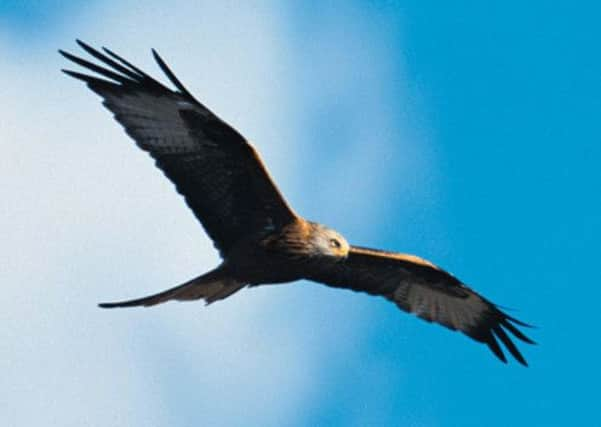Crimes against Scottish birds at five year high


The number of raptor poisoning incidents doubled from three in 2012 to six in 2013, while there were 64 cases of wildlife crime against birds including red kites, golden eagles and hen harriers in 2013 - compared to just 54 the previous year.
Advertisement
Hide AdAdvertisement
Hide AdA total of 319 offences against wildlife were recorded by Police Scotland compared with 307 in the previous year. The offences were described in the report as being both broad in nature and levels of cruelty and can often incorporate elements of organised crime, including the use of illegal firearms or illegal gambling.
Poaching crimes involving fish, deer and coursing were the most common, with more than 40 per cent of all recorded wildlife offences in Scotland relating to salmon and freshwater fisheries. These offences rose by 29 per cent from 101 in the year from 2011 to 2012 to 130.
Environment Minister Paul Wheelhouse, chair of the Partnership for Action Against Wildlife Crime Scotland, said: “While poaching is the most commonly recorded offence, crimes against our beautiful birds of prey and pearl mussels remain the most serious in terms of damage to Scotland’s natural environment and our reputation.
“Though the numbers involved are relatively small, there is absolutely no room for complacency.
“Tackling wildlife crime is not just about law enforcement. We must continue to work with stakeholders to raise awareness and therefore ensure prevention so that these crimes decrease and stop.”
He added: “I remain unsympathetic to those who believe that crimes against wildlife are of little consequence and can somehow be justified. Offences can have massive ecological impacts whilst others involve great levels of cruelty, and I will not accept this in a modern, vibrant Scotland.”
One of the most high profile cases over the preiod was the illegal poisoning of the satellite-tagged golden eagle ‘Fearnan’ in the Angus Glens in November 2013. The bird died after ingesting the highly toxic pesticide carbofuran - which is found to be present in 70 per cent of raptor poisonings.
It is believed that the main driver for poisoning birds of prey is the lucrative shooting industry. People with a financial interest in sporting estates complain that stocks of game birds - like red grouse - can be wiped out by predators such as golden eagles.
Advertisement
Hide AdAdvertisement
Hide AdNew measures to tackle crime against Scotland’s birds of prey were introduced in July last year - including a restriction of the use of a General Licence where licensing authority Scottish Natural Heritage, had reason to believe that crime had taken place; a review of wildlife crime penalties to establish if they act as a sufficient deterrent and encouragement of law enforcement to use all investigative tools to aid wildlife crime investigations.
Duncan Orr-Ewing, RSPB Scotland head of species and land management, said: “It is clear from the statistics published that there continues to be a considerable threat to some of our rarest birds of prey such as red kites, golden eagles and hen harriers by a number of individuals who pay little regard to the laws protecting our wildlife.”
In the courts, 75 people were prosecuted for wildlife crime in 2012-13, with 55 convicted.
Over the five years from 2008 to 2009 to 2012 to 2013 police figures for wildlife crime rose by 5.5 per cent, while convictions in the courts for such offences increased by 6.5 per cent. SEE ALSO